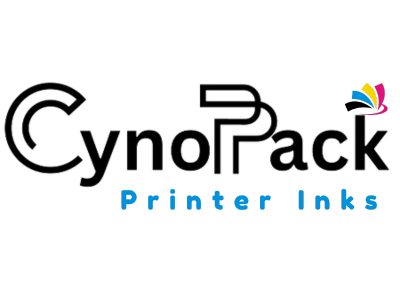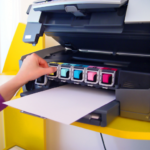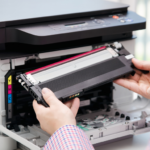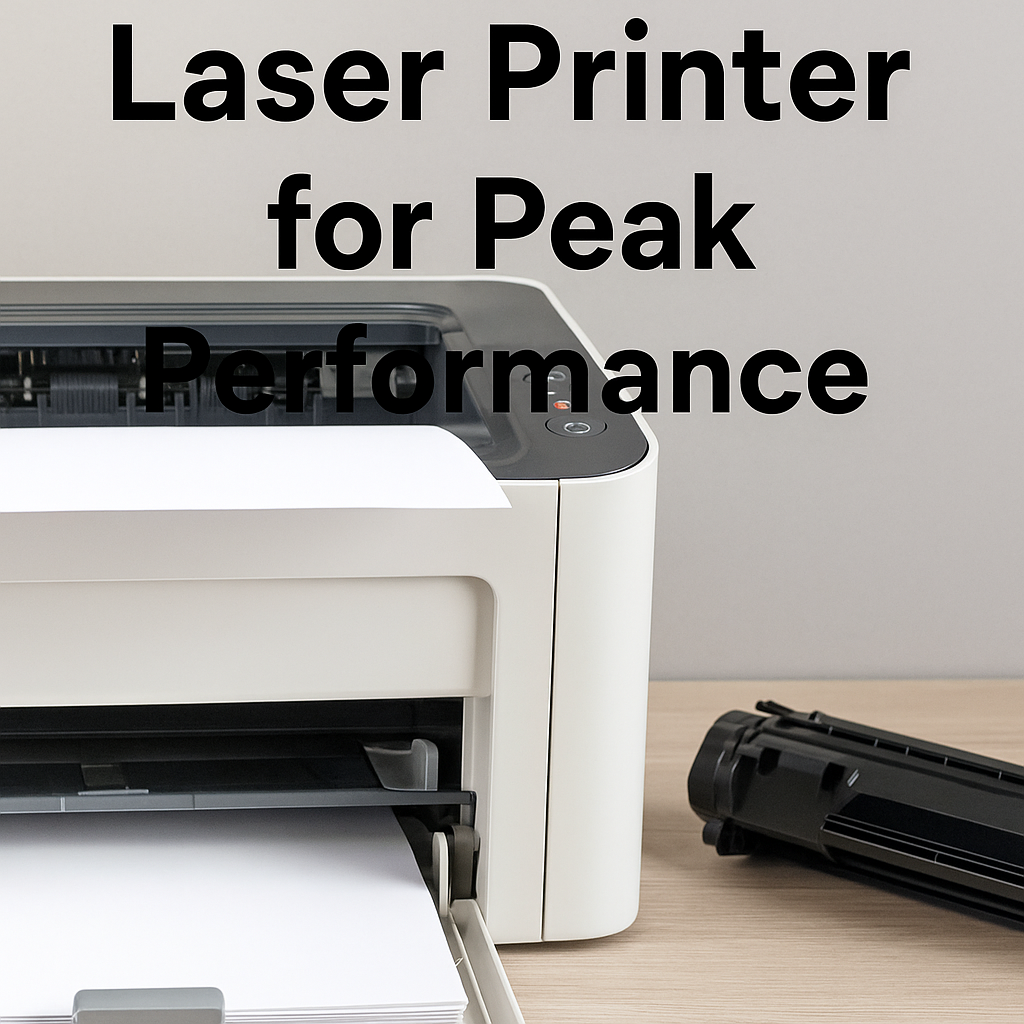If you’re using a laser printer regularly—whether at home or in an office—you already know the benefits: fast printing, crisp text, and efficiency. But like any piece of machinery, laser printers need proper care. Just like you service your car to keep it running smoothly, your printer also deserves regular maintenance to function at its best.
In this guide, we’ll explore how to maintain a laser printer for optimal performance, how often to clean it, which components to look after, and what habits can prolong its life. The good news? Most of this is simple and doesn’t require any technical expertise.
Why Laser Printer Maintenance Matters
Let’s get this straight: Laser printers are workhorses. They’re built for volume, speed, and precision. But even the most reliable printer can slow down or start producing smudgy prints if not properly maintained.
Regular maintenance can:
- Improve print quality
- Prevent paper jams
- Extend the life of your printer
- Reduce toner waste and printing errors
- Save you money on repairs and replacement parts
Whether you print occasionally or run hundreds of pages weekly, a little upkeep goes a long way.
1. Keep Your Printer Clean
Dust, toner residue, and tiny paper fibres build up over time. Left unchecked, they can clog internal components, affect sensors, and result in poor print quality or mechanical failure.
Here’s how to clean your laser printer:
a) Turn it off and unplug it
Safety first. Always power down and unplug your printer before doing any cleaning.
b) Wipe the exterior
Use a soft, lint-free cloth slightly dampened with water. Avoid harsh cleaners, especially near vents or buttons.
c) Clean the paper tray
Remove the tray, shake out any loose paper bits, and gently wipe it down. Make sure there’s no paper dust sticking in the corners.
d) Use a laser printer cleaning brush or cloth
Inside the printer, you’ll see rollers and maybe the toner drum (depends on model). Use a microfibre cloth or soft brush to gently remove any toner or dust. Avoid touching the drum directly if it’s visible—oils from your fingers can damage it.
e) Compressed air
Blow out dust from hard-to-reach areas using short bursts of compressed air (never use a vacuum cleaner).
How often?
Do a general clean every 1–2 months, or more frequently in dusty or high-volume environments.
2. Store Toner Cartridges Properly
Toner doesn’t “dry out” like ink, but it can degrade if stored improperly. Poor storage can also lead to poor print performance or waste.
✅ Tips for storing toner:
- Keep cartridges sealed in their packaging until ready to use
- Store them in a cool, dry place—away from direct sunlight or heat
- Never shake used cartridges unless instructed (it may create leaks)
3. Use the Right Paper
Low-quality or incorrect paper can lead to misfeeds, poor print quality, and roller damage. Using the wrong paper can also cause frequent paper jams and toner not fusing properly.
✅ What to look for:
- Choose laser printer-compatible paper
- Stick to the recommended weight range (usually 70-90gsm for standard printing)
- Avoid using wrinkled, damp, or previously printed paper
Some users assume all paper is the same—it’s not. The right paper ensures toner adheres well and your prints look sharp.
4. Update Firmware and Printer Drivers
Outdated firmware can cause bugs, slow performance, and compatibility issues with new operating systems or devices.
✅ What to do:
- Go to your printer manufacturer’s website (e.g., HP, Canon, Brother, Epson)
- Download and install the latest firmware and drivers
- Schedule a monthly check for updates if you’re using your printer regularly
You’d be surprised how many print quality issues disappear with a simple driver update.
5. Replace Consumables on Time
Laser printers use several replaceable components besides toner:
| Part | What It Does | When to Replace |
|---|---|---|
| Toner cartridge | Supplies the powder for printing | When prints fade or warning appears |
| Drum unit | Transfers toner onto the paper | Every 10,000–50,000 pages (model-specific) |
| Fuser unit | Bonds toner to paper with heat and pressure | Every 50,000–200,000 pages |
| Transfer belt | Moves paper through the printing process | Occasionally—check your printer’s manual |
| Rollers | Feed and guide paper through the machine | If misfeeds or jams become frequent |
Some printers will notify you when it’s time to replace these. Others won’t—so keep an eye on page count or use a tracking app.
6. Run Built-in Cleaning Cycles
Most modern laser printers have a self-cleaning or maintenance mode. This process helps remove toner buildup and calibrates the device.
✅ How to run it:
- Access your printer’s settings menu (on the panel or via your computer)
- Look for “Maintenance,” “Tools,” or “Cleaning” options
- Follow on-screen instructions
Run this every couple of months or whenever print quality starts to decline.
7. Avoid Overloading the Tray
We’ve all tried to squeeze just one more sheet into a full paper tray. Unfortunately, this can strain the feeder rollers and lead to multiple sheets being pulled at once or paper jams.
✅ Best practices:
- Don’t overfill trays—stick to the marked limit
- Fan paper before loading to prevent sticking
- Align edges neatly before placing into the tray
8. Shut Down Properly
Instead of unplugging the printer or switching it off mid-process, use the power button and wait for the printer to fully power down. This allows the cooling fan to run and protects internal parts.
Shutting it down improperly can damage the fuser or power supply over time.
9. Keep an Eye on Print Quality
If you notice:
- Ghosting (faint duplicates of text/images)
- Faded prints
- Dark spots or lines
- Toner smudges or streaks
…it may be time for a cleaning, drum replacement, or a toner refill. Addressing these early avoids long-term issues.
10. Track Usage and Schedule Servicing
If you run a small business or use your printer frequently, consider tracking page counts or using print monitoring software. It helps plan:
- When to reorder toner
- When to schedule cleaning
- When parts are due for replacement
Many office printers include built-in tracking features. For home users, a simple spreadsheet works fine too.
Quick Maintenance Checklist
Here’s a printable monthly checklist you can follow:
✅ Dust exterior and paper tray
✅ Check toner and drum life
✅ Run cleaning cycle
✅ Update printer firmware
✅ Clean internal rollers (if needed)
✅ Check for paper jams or warning lights
✅ Inspect cables and connections
Final Thoughts
Knowing how to maintain a laser printer for optimal performance is more about habit than heavy work. A few minutes every month can save you from frustrating print failures, expensive repairs, and even printer replacements.
To recap:
- Clean your printer regularly
- Use the right paper and toner
- Don’t ignore warning lights or poor-quality prints
- Replace consumables on schedule
- Update firmware and drivers
A well-maintained laser printer will serve you reliably for years, whether you’re printing 10 pages a week or 500.
Need reliable toner for your laser printer?
Check out Cynopack.com for affordable, high-yield compatible toner cartridges—perfect for home and business users looking for quality without the brand-name price tag.





